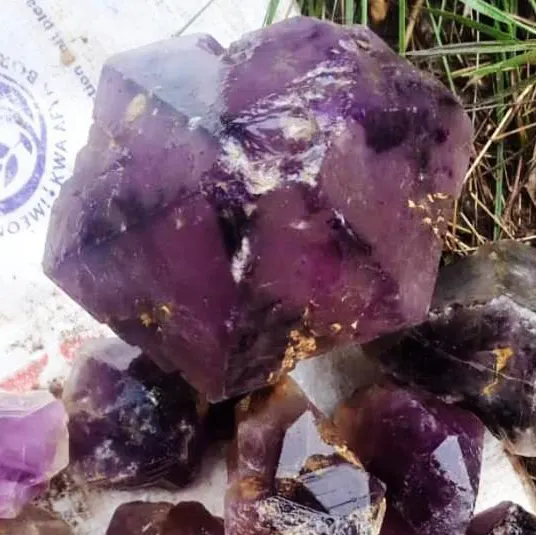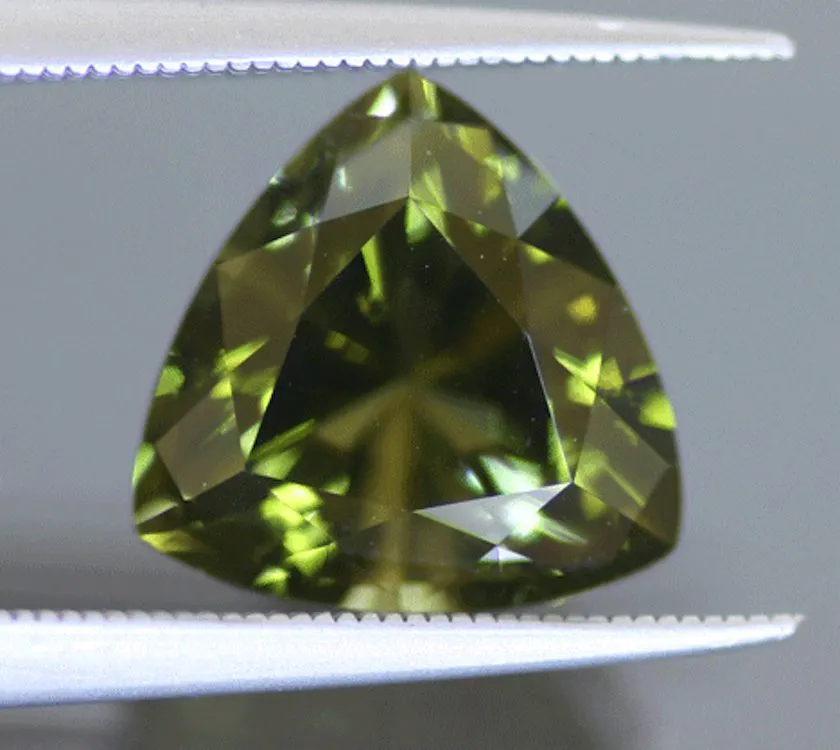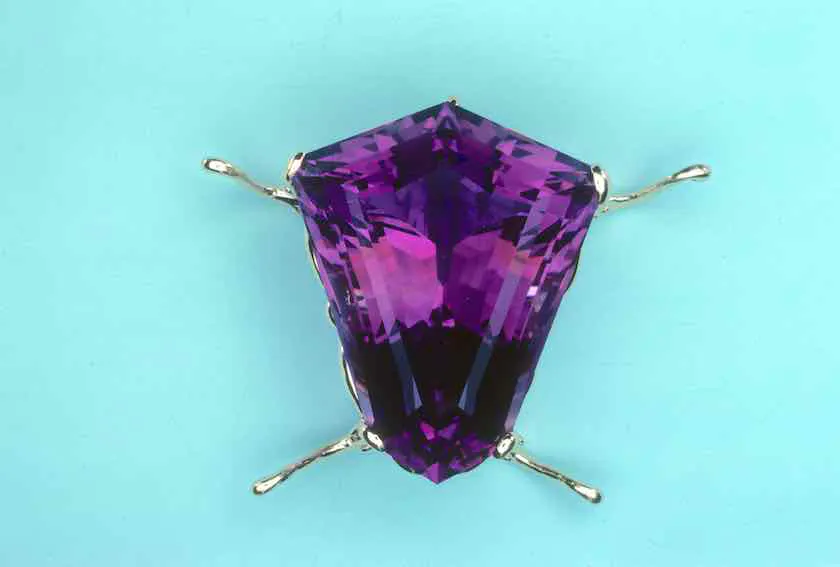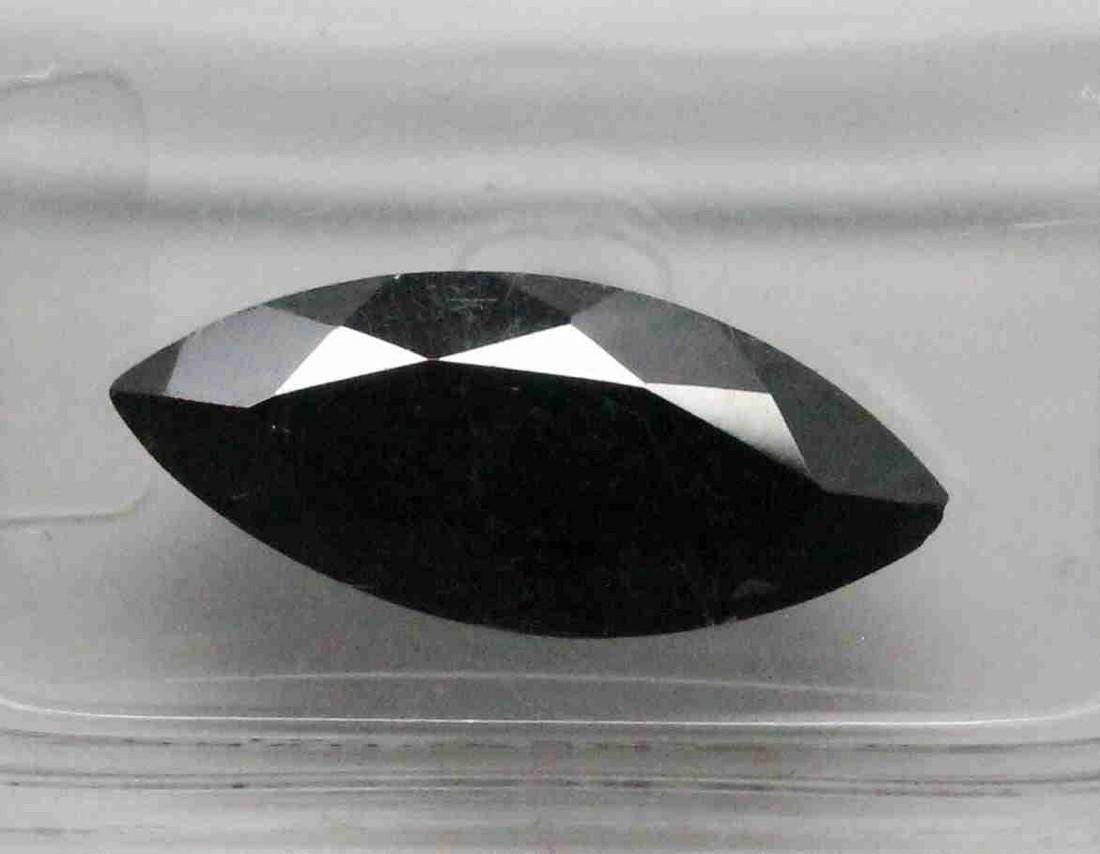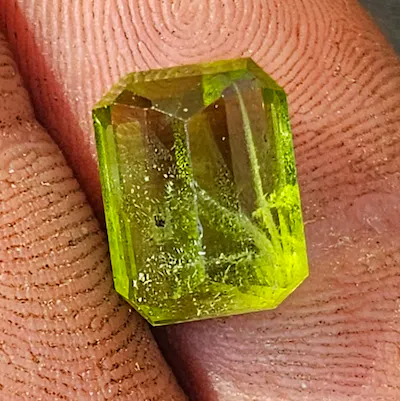News
How to Start a Gem Collection
If you’ve ever wanted to start a gem collection but didn’t know where to begin, look no further. This article will provide you with tips and guidance on how to start your own gem collection and how to organize and grow it over time. Whether you already have a few gems lying around or are completely new to collecting, this article will help you take the first steps towards building an impressive gem collection that you can enjoy and share with others. From record keeping to storage and care, as well as adding to your collection on a budget, this article covers all the essentials for aspiring gem collectors. So get ready to embark on an exciting journey into the world of gemstones and start your gem collection today!
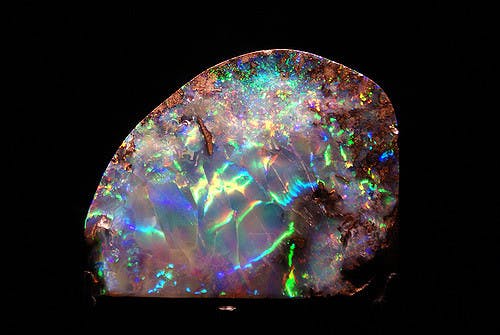
Record Keeping
Importance of keeping records
Keeping records of your gem collection is crucial for several reasons. First and foremost, it helps you keep track of what you have collected. As your collection grows, it can become overwhelming to remember every gem you own. By maintaining detailed records, you can easily refer back to them to identify and categorize your gems.
Additionally, keeping records can help you make informed decisions about your collection. When you’re considering your next gem purchase, your records can provide valuable insights, such as the gemstones you already own or the specific varieties you are interested in.
Furthermore, records are essential for documentation purposes. If you ever want to sell or donate a gem, having detailed information about it, such as its physical description, treatments or enhancements, and any laboratory reports, will add value to your piece and make the transaction smoother. Moreover, in the event of passing down your collection to your heirs, having clear records will help them understand the value and significance of each gem.
Information to include in records
When keeping records of your gem collection, it is important to include specific information about each gemstone. At a minimum, your records should contain the following details:
- Gemstone species and variety: Identify the specific gemstone, such as ruby or emerald, and its variety, such as Burmese ruby or Colombian emerald.
- Physical description: Include information about the color, cut, clarity, and carat weight of the gemstone. This description will help you easily identify the gem in your collection.
- Treatments or enhancements: Note any known treatments or enhancements that the gemstone has undergone. This information is valuable for assessing the value and rarity of the gem.
- Laboratory reports: If you have any laboratory reports or certifications for a gemstone, make sure to include them in your records. These reports provide independent assessments of the gem’s quality and authenticity.
- Lapidary/gem designer: If a gemstone has been cut or designed by a specific lapidary or gem designer, make a note of their name. This adds a personal touch to your collection and can be valuable information for potential buyers or admirers.
- Date of cutting and date acquired: Record the dates when the gemstone was cut and when you acquired it. These dates can be helpful for determining the age and history of your collection.
- Bills of sale and other paperwork: Keep track of any bills of sale or invoices related to the purchase or acquisition of each gemstone. This documentation is essential for proving the provenance and value of your gems.
- Dealer names and contact information: Make a note of the dealers or sellers from whom you purchased or acquired your gems. This information can be useful for future reference or for seeking advice or assistance from the dealer.
- Physical location: Record the physical location where each gemstone is stored or displayed. Keeping track of the physical whereabouts of your gems will help you find them easily and ensure their safety.
Remember, a picture is worth a thousand words. Include photographs of your gemstones in your records. Photographs capture the visual beauty of the gem and provide a visual record of your collection.
Tips for maintaining records
To effectively maintain your gem collection records, consider following these tips:
- Use a dedicated notebook or software program: Choose a method that works best for you to keep your records organized and accessible. Some collectors prefer using a physical notebook, while others prefer digital software. There are many software programs available specifically designed for gemstone collectors.
- Regularly update your records: Make it a habit to update your records whenever you acquire a new gemstone or have new information to add. This will prevent you from falling behind and ensure that your records are accurate and up to date.
- Be consistent and thorough: Maintain a consistent format and level of detail in your records. Include all the relevant information for each gemstone to create a comprehensive and valuable record.
- Store your records safely: Keep your records in a secure location, whether it’s a physical folder or a password-protected digital file. Backup your digital records regularly to prevent any loss or damage.
- Use clear and concise language: Write your records in a clear and concise manner to ensure that the information is easily understandable. Avoid using technical jargon unless necessary, especially if you plan to share your records with others.
- Create an index or catalog: Consider creating an index or catalog of your gem collection that summarizes the key information for each gem. This can serve as a quick reference guide and make it easier to navigate through your collection.
By following these tips, you can maintain well-organized and informative records of your gem collection, making it easier to manage and appreciate your precious gems.
Storage and Care
Importance of organized storage
Proper storage is vital for maintaining the beauty and integrity of your gem collection. Organized storage not only ensures that your gems remain safe and protected but also allows for easy access and viewing.
One of the key benefits of organized storage is the prevention of scratches and damage to your gemstones. By storing gems separately or by species, you can avoid contact between different stones, reducing the risk of abrasion or chipping. Some gems are more susceptible to damage than others, so it’s important to handle and store each gem with care.
In addition, organized storage makes it easier to find and retrieve specific gems from your collection. Sorting your gems by species, color, or origin can help you quickly locate the desired gem when you want to enjoy or showcase it.
Options for storage and display
When it comes to storing and displaying your gemstones, you have several options to choose from depending on the size of your collection and your personal preferences:
-
Gemstone jars or vials: Small glass or transparent plastic jars or vials are an excellent option for storing individual gemstones. These containers keep the gems secure and free from dust while allowing you to easily view them. Label each jar or vial with the name of the gemstone for easy identification.
-
Jewelry bags or pouches: Soft fabric or velvet jewelry bags are ideal for storing multiple gemstones. These bags provide a cushioned and scratch-resistant environment for your gems and can be easily organized in a drawer or box.
-
Plastic containers with dividers: For a small and growing collection, plastic containers with adjustable dividers are a practical and affordable storage solution. These containers allow you to separate and categorize your gems based on species, color, or any other criteria you prefer.
-
Boxes with clear lids and padding: Specialized gem storage boxes with clear lids and padded compartments offer a more elegant and protective option. These boxes are designed to hold multiple gems securely while providing a clear view of the collection. The padding helps prevent any movement or impact that could damage the gems.
-
Gem folders or albums: If you prefer a portable and organized storage solution, consider using gem folders or albums. These folders typically contain individual compartments or plastic sleeves where you can safely store and display your gemstones. Gem folders are particularly useful if you like to bring your collection with you for showcases or events.
-
Display cases or cabinets: For those with larger collections or a desire to showcase their gems, display cases or cabinets provide an attractive option. These cases typically have glass doors or sides that allow you to view your collection while keeping it protected from dust and other environmental factors. Some display cases even include lighting to enhance the visual appeal of the gems.
Choose the storage and display option that best suits your collection size, budget, and personal style. Remember to consider factors such as accessibility, protection, and aesthetics when making your decision.
Tips for proper care and cleaning
Regular care and cleaning are essential for preserving the beauty and quality of your gem collection. Follow these tips to ensure that your gems remain in top condition:
-
Handle with clean hands: Always handle your gemstones with clean hands to avoid transferring oils, dirt, or other contaminants onto the gems’ surface. Oils and dirt can accumulate over time and affect the clarity and luster of the gem.
-
Avoid excessive heat and sunlight: Some gemstones, such as amethyst and kunzite, can fade or change color when exposed to prolonged sunlight or high temperatures. To protect your gems, store them in a cool and dark place when they’re not on display or in use.
-
Use a soft cloth for cleaning: When cleaning your gemstones, use a soft, lint-free cloth to gently wipe away any dirt or residue. Avoid using abrasive or harsh materials that could scratch or damage the gem’s surface.
-
Use mild soapy water for deeper cleaning: If your gemstones require a more thorough cleaning, prepare a mixture of warm water and mild detergent or dish soap. Soak the gemstones in the solution for a few minutes, then gently scrub them with a soft brush or cloth. Rinse the gems thoroughly with clean water and pat them dry with a soft cloth.
-
Be cautious with gemstone-specific care: Different gemstones have specific care requirements due to their unique properties. For example, opals and pearls should be cleaned using only water and a soft cloth, as they are delicate and susceptible to damage from chemicals. Consult gem-specific care guides or reputable sources for guidance on caring for your specific gemstones.
-
Avoid using ultrasonic cleaners: While ultrasonic cleaners can be effective for some jewelry, they are not suitable for all gemstones. The vibrations from ultrasonic cleaners can cause damage to certain gems, especially those with fractures, treatments, or delicate structures. If in doubt, avoid using ultrasonic cleaners and opt for gentle manual cleaning methods instead.
By following these care and cleaning tips, you can ensure that your gem collection remains beautiful and pristine for years to come. Regular maintenance and attention will help preserve the value and enjoyment of your gems.
Adding to Your Collection
Researching and understanding gems
Before adding to your gem collection, it’s important to conduct thorough research and gain a good understanding of the gemstones you are interested in. This research will help you make informed decisions and acquire gems that align with your interests and preferences.
Start by familiarizing yourself with the various gem species and their properties. Learn about the different colors, cuts, and quality factors that influence the value and desirability of each gem. Understanding the characteristics and rarity of different gemstones will enable you to assess their quality and determine their suitability for your collection.
To deepen your knowledge, seek out reputable resources such as books, online articles, and educational websites that provide in-depth information about gemstones. The International Gem Society (IGS) website, for example, offers a comprehensive gemstone encyclopedia, gemology courses, and a photo gallery of thousands of gemstones to aid your research.
Joining gemology forums, attending gem shows, or participating in gem-related events can also provide valuable opportunities to learn from professionals and enthusiasts in the field. Engaging with others who share your passion for gemstones can expand your knowledge and help you stay updated on industry trends and developments.
Buying the best quality gem
When adding gemstones to your collection, aim for the best quality gem that you can afford. While budget considerations may play a role, investing in higher-quality gems will ensure greater satisfaction and long-term value.
To assess the quality of a gem, consider the following factors:
-
Color: Gemstone color is one of the most important factors contributing to its beauty and value. Evaluate the hue, saturation, and tone of the gemstone to determine its quality and desirability.
-
Cut: A well-cut gem will display optimal brilliance, sparkle, and symmetry. Look for gemstones with precise faceting and proper proportions. A well-cut gem can significantly enhance the gem’s overall appearance and value.
-
Clarity: Clarity refers to the presence or absence of internal or external flaws, known as inclusions and blemishes, respectively. Inclusions can affect the transparency and brilliance of a gem. Look for gems with minimal visible inclusions for higher quality.
-
Carat weight: Carat weight measures the size of a gemstone. Larger gemstones tend to have higher value, but size alone is not an indicator of quality. Consider the balance between size and other quality factors when evaluating a gem.
-
Treatment and enhancement: Some gemstones undergo treatments or enhancements to improve their appearance or durability. It’s important to be aware of any treatments present in a gem and understand how they may affect its value and long-term care.
-
Origin: Origin can impact the value and desirability of a gemstone. Certain gem varieties, such as Kashmir sapphires or Burmese rubies, are highly sought after due to their historical significance and rarity. Consider the origin of the gem and any associated premium in the market.
Before making a purchase, always ask for a gemstone’s grading report or certification from a reputable gemological laboratory. These reports provide an independent assessment of the gem’s quality, authenticity, and any treatments, providing you with confidence in your purchase.
Different ways to grow your collection
There are various ways to grow your gem collection, depending on your preferences, budget, and availability. Consider the following options:
-
Purchase from reputable dealers: Buying gemstones from reputable dealers ensures that you are getting genuine and accurately represented stones. Seek out dealers who specialize in the gemstones you are interested in and have a good reputation within the industry. Attend gem shows or visit gemstone retailers to explore a wide variety of options.
-
Attend auctions: Gemstone auctions can be an exciting way to acquire unique and rare gems. Keep an eye on reputable auction houses that specialize in gemstones and jewelry. Familiarize yourself with the auction process and set a budget before participating to ensure a successful and satisfying purchase.
-
Custom-made gemstones: Consider commissioning custom-made gemstones from lapidaries or gem designers. This allows you to create unique and personalized pieces that align with your specific preferences. Collaborate with the craftspeople to select gemstones, designs, and settings that reflect your vision.
-
Trade and network with other collectors: Engaging with other gem collectors can provide opportunities for trading or exchanging gemstones. Join gem clubs, attend collector meetings or gem-related events to meet fellow enthusiasts and potentially expand your collection through mutually beneficial exchanges.
-
Explore online platforms: Online platforms and marketplaces have made it easier to access a wide range of gemstones from around the world. Research reputable online retailers or auction sites that specialize in gemstones. Read reviews and verify the legitimacy and customer satisfaction of the platforms before making a purchase.
-
Gem hunting and mining: For a hands-on and adventurous approach, consider gem hunting or mining experiences. Many countries have sites where you can search for gemstones in their natural habitats. Participating in these activities can lead to exciting discoveries and add a sense of adventure to your collection.
Remember, building a gem collection is a personal journey. Enjoy the process of discovering and acquiring gemstones that captivate your interest and resonate with your passion for these natural wonders.
Collections with a Focus
Collecting fine gemstones and jewelry
Some gem collectors gravitate towards fine gemstones and jewelry, appreciating the craftsmanship and exquisite qualities of each stone. Collecting fine gemstones offers the opportunity to acquire high-quality and rare gems that showcase the pinnacle of beauty and value.
When focusing on fine gemstones and jewelry, consider the following aspects:
-
Rarity and uniqueness: Seek out gemstones that are rare in nature or exhibit unique qualities. These may include rare colors, unusual cuts, or exceptional carat weights. The rarity of a gemstone contributes to its desirability and value.
-
High-quality craftsmanship: Look for finely crafted jewelry settings that enhance the beauty of the gemstone. Pay attention to the precision of the setting, the quality of the metalwork, and the attention to detail in the overall design. Fine jewelry complements the gemstone and elevates its aesthetic appeal.
-
Trusted sources: When purchasing fine gemstones and jewelry, rely on reputable sources with a proven track record in dealing with high-end pieces. Trustworthy dealers and jewelers can provide accurate information, proper certifications, and assurance of the gem’s quality and authenticity.
-
Historical and cultural significance: Explore gemstones with historical or cultural significance. Gems associated with famous figures, historical events, or specific time periods can add depth and intrigue to your collection. Consider the stories and narratives behind these gems as you add them to your collection.
-
Investment potential: Fine gemstones and jewelry can also be viewed as an investment opportunity. While gemstones should not solely be acquired for investment purposes, collecting high-quality pieces may hold and potentially increase their value over time. Consult with professionals or gemstone investment advisors for guidance on potential investment opportunities.
Collecting fine gemstones and jewelry requires both an appreciation for the beauty of these pieces and a discerning eye for quality and craftsmanship. Enjoy the process of discovering and acquiring gems that showcase the best of what the gemstone world has to offer.
Focusing on a particular gem
Some gem collectors choose to focus their collection on a particular gemstone. This focused approach allows you to explore the various varieties and characteristics of the chosen gem in detail, becoming an expert and building a comprehensive collection.
When focusing on a specific gem, consider the following:
-
Research and study: Immerse yourself in the knowledge and understanding of the chosen gemstone. Learn about its history, origins, mining locations, and different varieties. Familiarize yourself with the quality factors and value drivers specific to the gem and use that knowledge to make informed decisions.
-
Seek out unusual and rare varieties: Look for unique and rare varieties within the chosen gemstone. Every gemstone has different color variations and characteristics that make each piece distinct. Collecting a range of rare varieties enhances the diversity and value of your collection.
-
Build a complete collection: Aim to build a well-rounded collection that includes specimens of different sizes, shapes, and qualities. A comprehensive collection showcases all the nuances and variations within the chosen gemstone. This can be particularly rewarding and informative when comparing and contrasting the different specimens.
-
Create a visual display: Consider creating a visual display of your collection that showcases the beauty and diversity of the gemstone. This could be through custom-designed jewelry pieces, framed gemstone displays, or themed exhibits. A visually engaging display not only enhances the aesthetics but also allows you to share and enjoy your collection with others.
-
Network with experts and enthusiasts: Engage with experts and fellow enthusiasts in the field to exchange knowledge, insights, and rare finds. Attend gemological conferences, gem shows, or join gem-specific communities and forums. Networking allows you to tap into a wealth of expertise and expand your understanding of the gemstone.
Focusing on a particular gemstone offers a deep and immersive experience, allowing you to become a connoisseur of that gem and build a collection that represents the breadth and depth of its variations.
Seeking out rare and unusual species
For those seeking to create a truly unique and exceptional gem collection, focusing on rare and unusual gem species can be a rewarding endeavor. There are countless gem species found worldwide, many of which are lesser-known but possess captivating beauty and rarity.
When seeking out rare and unusual gem species, consider the following:
-
Research rare gem species: Explore gemological resources and publications to discover lesser-known gem species. These gems may be rare due to limited distribution, scarcity, or low commercial demand. Understand their properties, origins, and unique characteristics to appreciate their value.
-
Identify gemological hotspots: Certain regions of the world are known for producing rare and unique gem species. Research gemological hotspots and learn about the gems that originate from those areas. Visit gem shows or contact local dealers in those regions to acquire these rare treasures.
-
Consult with experts: Seek guidance from gemological experts and specialists who have a deep knowledge of rare gem species. They can provide insights into the identification, quality assessment, and sourcing of these gems. Their expertise will help you navigate the market and avoid counterfeit or imitation gemstones.
-
Consider mineral specimens: Rare gem species are often sought-after by collectors of mineral specimens. Some gems may be more commonly found in their crystalline or natural form rather than cut and faceted gemstones. Including mineral specimens in your collection adds a unique dimension and shows the beauty of the gem in its raw form.
-
Network with other collectors: Connect with fellow collectors who share an interest in rare and unusual gem species. Attend gem and mineral shows, join specialized gemological societies, or participate in online communities to meet others with similar passions. Networking can provide access to rare gem sources and create valuable opportunities for trading or sharing knowledge.
Seeking out rare and unusual gem species can be an exhilarating and rewarding pursuit, allowing you to create a collection that showcases the wonders of the gemological world.
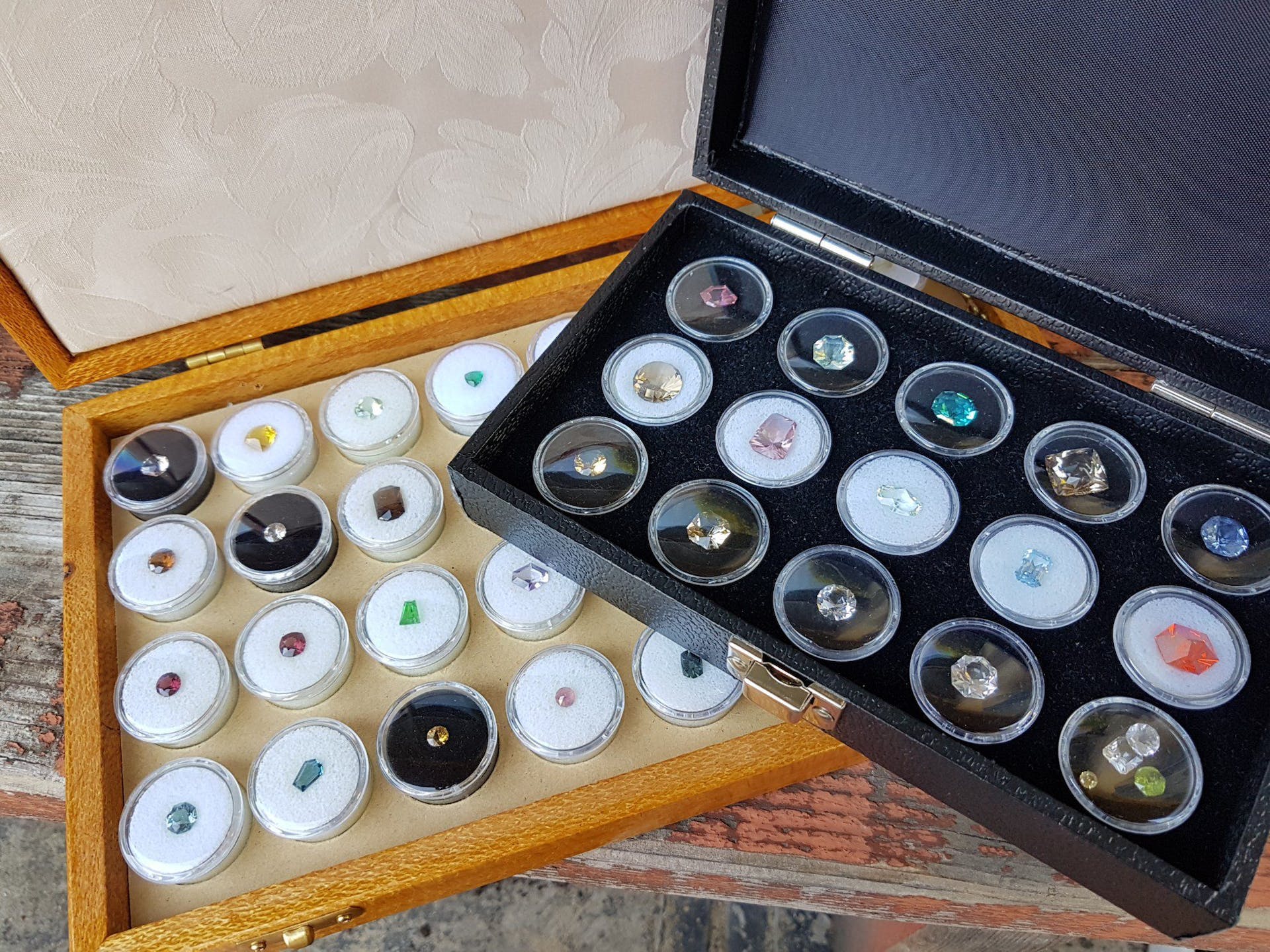
How to Start a Gem Collection on a Budget
Starting with inexpensive gem families
Starting a gem collection on a budget does not mean compromising on quality or beauty. There are several gem families that offer affordability without sacrificing aesthetic appeal. These inexpensive gem families are an excellent starting point for building your collection while staying within your budget.
Consider the following gem families known for their affordability:
-
Quartz: Quartz is a versatile gem family that offers a wide range of colors and varieties. From clear quartz to amethyst, citrine, and rose quartz, there are numerous options to choose from. Quartz gems are widely available and often come in larger sizes, making them an affordable option for collectors.
-
Zircon: Zircon is a natural gemstone known for its brilliant sparkle and wide color range. While blue zircon is a popular choice, zircon is also found in vibrant shades of red, yellow, and green. Zircon can be a more affordable alternative to other colored gemstones, especially when considering larger sizes.
-
Garnet: Garnets come in a variety of colors, including red, green, orange, yellow, and more. They offer good durability and an excellent price-to-value ratio. Demantoid garnets and tsavorite garnets, in particular, are highly sought after by collectors for their exceptional brilliance and unique green color.
-
Topaz: Topaz is a gemstone known for its wide range of colors, including blue, pink, yellow, and brown. Blue topaz, in particular, can be an affordable and popular choice for collectors. Its availability in large sizes and beautiful hues makes it an attractive option for those on a budget.
-
Agate: Agate is a variety of chalcedony known for its banded appearance and wide range of colors. You can find agates in various colors, such as blue, green, pink, and brown. They are commonly used in jewelry and decorative items, making them accessible and affordable for collectors.
-
Turquoise: Turquoise is a stone that has been prized for its unique blue-green color for centuries. It is often used in Native American jewelry and is known for its cultural significance. Turquoise can be found in a wide range of prices, making it accessible to collectors on different budgets.
Starting your gem collection with these inexpensive gem families allows you to acquire a variety of gemstones without breaking the bank. Look out for well-cut and high-quality specimens within these gem families to ensure that your collection maintains aesthetic appeal and potential for future value.
Considering affordable varieties
Within each gem family, there are often affordable varieties that offer excellent value for money. These affordable varieties can help you expand your gem collection without straining your budget. Consider the following options:
-
Smaller sizes: Opting for smaller-sized gemstones can be a more affordable way to start your collection. Smaller gems still showcase the beauty and color of the gem without the premium associated with larger sizes. Look for well-cut small gems that have good color saturation and clarity.
-
Less saturated colors: In some gemstone varieties, less saturated colors may be more affordable than intensely vibrant shades. For example, a pale pink tourmaline or a lighter blue aquamarine can be more budget-friendly compared to their more vivid counterparts. These gems can still exhibit beauty and charm.
-
Different cuts: The choice of cut can also impact the price of a gem. Some cuts, such as simple cushions or emerald cuts, may be more affordable than complex cuts or fancy shapes. Consider your personal preference and budget when selecting the cut of a gemstone.
-
Cabochons: Cabochon-cut gemstones, which have a smooth and rounded top with no facets, are often more affordable than faceted gemstones. Cabochon gems can be an interesting addition to your collection, especially for gem varieties that exhibit unique optical phenomena, such as cat’s eye or star effects.
By considering these affordable varieties within gem families, you can add a range of gemstones to your collection while staying within your budget. Remember to prioritize the quality and craftsmanship of the gemstone, even when working with more affordable options.
Exploring synthetic and treated gemstones
Synthetic and treated gemstones are another avenue to explore when starting a gem collection on a budget. These gems offer affordability and the opportunity to acquire a wider range of colors and varieties. With advancements in laboratory synthesis and gem treatments, synthetic and treated gemstones can closely resemble their natural counterparts.
Here are a few options to consider:
-
Synthetic gemstones: Synthetic gemstones, also known as lab-grown or created gemstones, are grown in a laboratory under controlled conditions. These gems have the same chemical composition and physical properties as their natural counterparts but are more affordable due to their controlled production. Popular synthetic gemstones include synthetic sapphires, emeralds, and rubies.
-
Heat-treated gemstones: Heat treatment is a common practice in the gem industry to enhance and alter the color and clarity of gemstones. Many gemstones, such as blue topaz and citrine, are routinely heat-treated to achieve their desired colors. Heat-treated gemstones can offer vibrant colors at a fraction of the price of their untreated counterparts.
-
Other treated gemstones: Various other treatments, such as irradiation, diffusion, and oiling, are used to modify the appearance of gemstones. These treatments can enhance color or clarity or reduce the visibility of natural inclusions. Treated gemstones can be more affordable while still offering attractive colors and visual appeal.
When purchasing synthetic or treated gemstones, transparency and disclosure are crucial. Seek out reputable sellers who provide full disclosure regarding the nature and treatment of the gems. Ask for certifications or reports from independent gemological laboratories to ensure the authenticity and disclosure of any treatments. Synthetic and treated gemstones can be an excellent way to expand your collection with a variety of colors and options, even on a limited budget.
Education and Resources
Benefits of learning about gems and gemology
Education and continuous learning are valuable aspects of building a gem collection. Learning about gems and gemology has several benefits that can enhance your collection and the overall enjoyment of your hobby:
-
Enhanced appreciation: Learning about gemstones deepens your understanding and appreciation of their unique qualities, rarity, and beauty. As you acquire knowledge about gem origins, formation processes, and characteristics, you’ll develop a greater respect and awe for the natural wonders that gems represent.
-
Informed decision-making: Education empowers you to make informed decisions when acquiring and evaluating gemstones. Understanding the quality factors, treatments, and value drivers allows you to assess gemstones critically and select pieces that align with your personal preferences and collection goals.
-
Quality assessment: Education equips you with the necessary skills to assess the quality of gemstones. You’ll be able to evaluate color, cut, clarity, and other factors accurately, enabling you to distinguish between high-quality gems and those of lesser value. This skill is essential for building a collection that showcases the finest examples of each gemstone.
-
Networking and community engagement: Learning about gems and gemology opens doors to connect with other enthusiasts and professionals in the field. Joining gemology courses, attending conferences, or participating in online communities allows you to interact and exchange knowledge with individuals who share your passion. Networking provides valuable insights, support, and potential opportunities for collaboration and cooperation.
-
Personal enrichment: Cultivating knowledge and expertise in gems and gemology is personally enriching. Learning about geological processes, historical references, and gemstone lore adds depth and context to your collection. You’ll be able to share fascinating stories and insights about your gems with others, enriching the experience of owning and showcasing your collection.
-
Avoiding scams and counterfeit gems: Education helps you protect yourself from scams and counterfeit gemstones. By learning about gem testing methods, authentication techniques, and industry best practices, you’ll be equipped to identify and avoid fraudulent or misrepresented gemstones. Knowledge acts as a shield against potential pitfalls in the gem market.
-
Long-term value preservation: Education contributes to protecting and preserving the long-term value of your gem collection. By understanding proper care, storage, and handling techniques, you’ll be able to maintain the beauty and integrity of your gems. Knowledge of the industry and market trends also enables you to make wise decisions regarding gemstone investment and collection management.
Investing time and effort in gemology education provides a solid foundation for your gem collection. Continuous learning and exploration ensure that you stay up to date with new discoveries, industry trends, and advancements in the world of gemstones.
Useful books and resources
There is a wealth of educational resources available for gem enthusiasts and collectors. Books, websites, and online courses offer a wide range of information to enhance your knowledge and understanding of gems and gemology. Here are a few notable resources to consider:
-
Books:
- “Gemstones of the World” by Walter Schumann: This comprehensive guide provides detailed information about gem species, their characteristics, and geographic origins.
- “Gem Identification Made Easy” by Antoinette Matlins: A practical guide to gem identification and evaluation, featuring color photographs and accessible explanations.
- “Gems & Crystals: From the American Museum of Natural History” by Anna S. Sofianides and George E. Harlow: This book offers insights into the world of gems, including their formation, properties, and cultural significance.
-
Gemological organizations and associations:
- The Gemological Institute of America (GIA): The GIA offers a wide range of educational resources, including online courses, workshops, and laboratory services. Their website provides extensive gemological information and access to gemology courses.
- The International Gem Society (IGS): As a leading resource for gem professionals and enthusiasts, the IGS offers an online gemstone encyclopedia, learning center, and community forums. The IGS website provides comprehensive information about gemstone properties, identification, and valuation.
-
Gemology-related websites and forums:
- Mindat.org: Mindat is a comprehensive online database of minerals and gems. The website offers detailed information about individual gem species, including their chemical compositions, crystal structures, and occurrences worldwide.
- Gemology Online: Gemology Online is an online forum and resource for gem enthusiasts. The forum provides a platform for discussing gemstone-related topics, seeking advice, and engaging with other gem enthusiasts and experts.
-
Online gemology courses:
- Coursera: Coursera offers online courses on gemology and related topics. Platforms like Coursera provide access to courses from renowned institutions and instructors around the world, allowing you to learn at your own pace and convenience.
- The Gemmological Association of Great Britain (Gem-A): Gem-A offers online and in-person courses for individuals interested in expanding their gemological knowledge. Their courses cover a wide range of topics, from gem identification to diamond grading.
These resources are just a starting point. Explore different books, websites, and courses to find the resources that resonate with your learning style and interests. Remember, continuous learning and exploration are essential for both personal enjoyment and the enrichment of your gem collection.
Engaging with gem clubs and online communities
Engaging with gem clubs and online communities can provide valuable opportunities for learning, networking, and sharing your passion for gemstones. These communities bring together like-minded individuals who can offer support, guidance, and insights into the world of gemology.
Consider the following ways to engage with gem clubs and online communities:
-
Join local gem clubs: Research gem clubs and associations in your area and consider becoming a member. Local gem clubs often organize meetings, educational events, talks, and field trips that provide opportunities to learn from experienced collectors and gem enthusiasts. Participating in club activities allows you to connect with others who share your love for gemstones and gain hands-on experience.
-
Attend gem and mineral shows: Gem and mineral shows are excellent venues for exploring a wide range of gemstones, interacting with sellers and collectors, and attending educational presentations. These events often attract knowledgeable professionals and enthusiasts who can answer your questions and provide insights into the world of gemology.
-
Participate in online forums and communities: Online forums and communities dedicated to gemology and gemstone collecting offer platforms to connect with enthusiasts from around the world. Websites like the IGS Forums provide spaces for sharing experiences, seeking advice, and discussing gem-related topics. Engaging with these online communities can be a valuable source of knowledge and camaraderie.
-
Share your collection and insights: Share your gem collection and insights with others through online platforms such as social media, blogs, or personal websites. Documenting and sharing your experiences can foster connections with fellow collectors and allow you to contribute to the gemological community. By sharing your knowledge and discoveries, you can inspire and educate others.
Remember to approach gem clubs and online communities with an open mindset, willingness to learn, and respect for different perspectives. Engaging with these communities allows you to tap into a vast network of gem enthusiasts who can support and enhance your gem collecting journey.
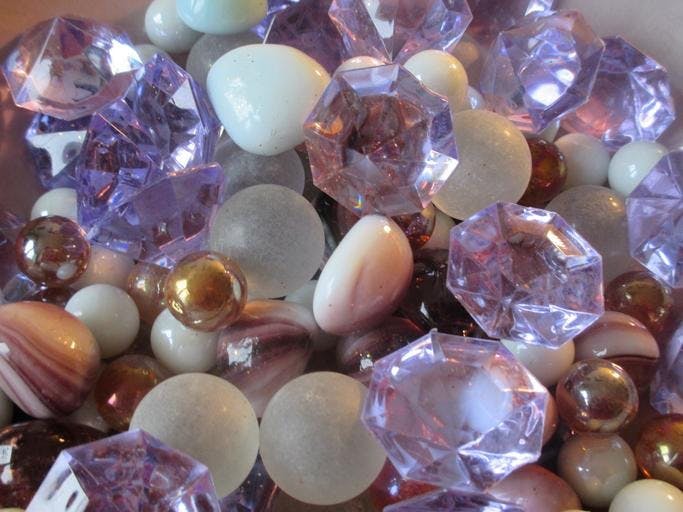
Related Articles
A Guide to Gem Cutting Styles
Gem cutting styles refer to the shape and arrangement of facets on a gemstone. The three most basic styles are brilliant, step, and mixed. This guide explores various gem cutting styles and their unique characteristics. Understanding these styles can enrich your appreciation for the craftsmanship and design of your gem collection.
What is a Gem?
Even though gems have captivated humans for centuries, there is still some confusion about what exactly constitutes a gem. This article provides a clear definition of what a gem is, including the criteria that distinguish gemstones from other minerals. Understanding the essence of a gemstone will deepen your understanding of your collection.
Trapiche Gems: An Introduction
Trapiche gems are a fascinating type of gemstone characterized by radial patterns that resemble the spokes of a wheel. This article introduces the world of trapiche gems, explaining their formation, rarity, and unique appearance. Exploring trapiche gems can add a unique and distinctive element to your gem collection.
Basics of Gemstone Density and Specific Gravity
Gemstone density and specific gravity are important properties that affect the weight, size, and overall character of a gemstone. This article delves into the basics of gemstone density and specific gravity, highlighting their significance in gem identification and evaluation. Understanding these properties contributes to a more comprehensive understanding of the gems in your collection.
These related articles provide additional insights and knowledge on specific aspects of gemology. Exploring these topics can deepen your understanding and appreciation for gems, complementing your gem collection and education.

